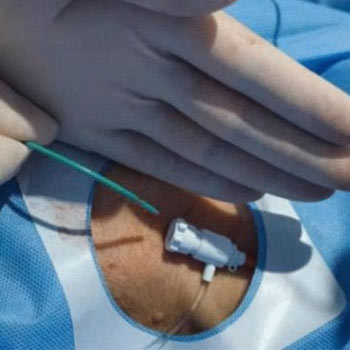In the realm of cardiology, temporary pacemakers play a critical role in managing cardiac rhythm disorders. This guide aims to provide a detailed overview of what temporary pacemakers are, their functions, how they are used in medical practice, and their significance in treating various cardiac conditions.
What is a Temporary Pacemaker?
A temporary pacemaker is a medical device used to regulate the heartbeat when the heart's natural pacemaker (the sinoatrial node) fails to maintain an adequate rhythm. Unlike permanent pacemakers, which are surgically implanted under the skin, temporary pacemakers are typically used for short-term support, often in emergency situations or during specific medical procedures.
How Does a Temporary Pacemaker Work?
Temporary pacemakers function by delivering electrical impulses to the heart through electrode wires, which are usually placed within the heart via a vein or directly on the heart's surface during open-heart surgery. These impulses stimulate the heart muscle to contract, thereby establishing a regular heart rate and rhythm.

Indications for Temporary Pacemaker Placement
Temporary pacemakers are employed in various clinical scenarios, including
Post-Surgical Recovery
After cardiac surgery, such as coronary artery bypass grafting (CABG) or valve replacement, the heart may experience temporary rhythm disturbances necessitating pacemaker support.
Acute Myocardial Infarction (Heart Attack)
During a heart attack, the heart's electrical system can be disrupted, leading to dangerous arrhythmias. Temporary pacemakers can stabilize the heart until normal rhythm is restored or a permanent pacemaker is implanted.
Elective Procedures
Certain diagnostic or therapeutic procedures, such as electrophysiology studies or catheter ablation for arrhythmias, may require temporary pacing to control the heart's electrical activity.
Drug Toxicity or Electrolyte Imbalances
Severe electrolyte disturbances (e.g., hyperkalemia) or drug toxicity (e.g., from medications affecting cardiac conduction) can lead to life-threatening arrhythmias that may necessitate temporary pacing.
What are the Types of Temporary Pacemakers?
Temporary pacemakers can be categorized based on their mode of operation
Transcutaneous Pacemakers
These devices deliver electrical impulses through electrodes placed on the chest wall, providing temporary pacing without invasive procedures. They are often used in emergency settings until more stable pacing can be achieved.
Transvenous Pacemakers
These pacemakers involve inserting electrode wires through a vein into the heart under fluoroscopic guidance. They offer more precise control over pacing parameters and are commonly used in hospitalized patients requiring longer-term pacing support.
Risks and Complications
While temporary pacemakers are generally safe and effective, they are not without risks
- Infection: Any invasive procedure carries a risk of infection, particularly when electrode wires are placed through the skin or veins
- Bleeding or Hematoma: There is a small risk of bleeding or hematoma formation at the insertion site, especially in patients with underlying coagulopathies.
- Malfunction: Device malfunction, although rare, can occur, necessitating prompt recognition and intervention by healthcare providers.
Management and Monitoring
Patients with temporary pacemakers require vigilant monitoring to ensure proper function and to detect any complications early. This includes
- Electrocardiographic Monitoring: Continuous ECG monitoring allows healthcare providers to assess the heart's rhythm and pacing parameters.
- Daily Assessment: Regular clinical assessments and daily checks of device settings are crucial to optimizing pacemaker function and patient safety.
Transition to Permanent Pacemaker
In cases where temporary pacing needs persist beyond a few days or weeks, or if there is a high likelihood of recurrent rhythm disturbances, healthcare providers may consider transitioning to a permanent pacemaker. Permanent pacemakers are surgically implanted devices designed for long-term cardiac rhythm management.
Temporary pacemakers are invaluable tools in cardiology, providing essential support in managing acute and reversible cardiac rhythm disturbances. By understanding their indications, types, and potential complications, healthcare providers can effectively utilize these devices to optimize patient outcomes. As technology advances, the role of temporary pacemakers continues to evolve, offering safer and more precise options for managing cardiac emergencies and complex arrhythmias.
In summary, temporary pacemakers represent a critical component of modern cardiology, offering temporary support for the heart's electrical system when natural mechanisms fail. Their versatility and effectiveness make them indispensable in both emergency situations and planned medical procedures, ensuring that patients receive the timely and appropriate care they need for optimal recovery and health.
By staying informed about temporary pacemakers and their clinical applications, healthcare providers can continue to improve patient care and outcomes in the field of cardiology.
